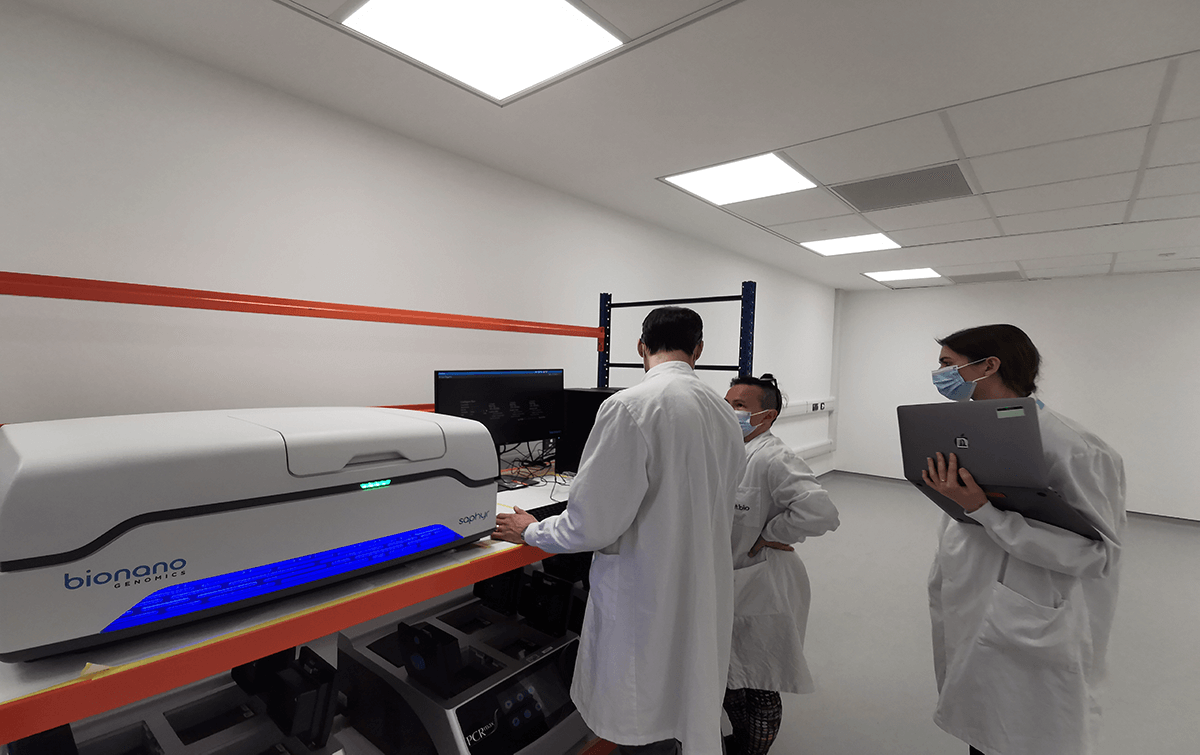20.05.2022 | Published by bit.bio
Blog
Back to blogs

20.05.2022 | Published by bit.bio

Meet the Bionano - a new piece of kit recently added to the bit.bio laboratories - and its introduction was the result of our culture and values allowing scientists to move fast and make decisions when they saw something that could make a difference. We strongly believe that organisations that encourage innovation are able to take advantage of new technologies, resources, and markets. A culture of innovation means thinking creatively about all aspects of your business, including your own cultural initiatives.
We want to make best cells in world so we need the best starting material - ie iPSCs that are highly defined and characterised. We need something at large scale because we work at a large scale - we produce billions of cells every day for our partners and customers.
Part of the role of the MSAT team is to assess the health of the banks of iPSCs that are being made so we can detect abnormalities. Cytogenetic Quality Control (QC) is a vital part of working with iPSCs, as these cells are prone to the spontaneous development of structural variants in their DNA.
This instrument will make a significant difference when it comes to analysing whether or not the genome of our cells have undergone any spontaneous mutations in culture. This is a problem that is common to all stem cells. What this machine allows us to do is to extract genomic DNA of our cells to fluorescently label that DNA and then linearise it through the flow cell. And it generates many gigabytes of data or even terabytes of data in parallel. This allows us to gain unprecedented clarity as to the genetic health of our cells.
We used to use a two-assay process to assess cytogenetic health, performed by an external contractor, which provided high confidence in the quality of our cells. However, this system was slow, expensive and had a restricted number of samples that it could process. So we began to look at a way to bring cytogenetic QC in-house.
Dr Klapholz from our genetic engineering department suggested to MSAT that they investigate the Bionano Saphyr, as an option, a next-generation Optical Genome Mapping (OGM) instrument. A proposal was prepared and presented to the wider bit.bio team who were very keen to bring the system in-house. The culture at bit.bio meant that the scientists were comfortable and confident in bringing this idea to the company. And the idea was accepted quickly and implemented.
We initially used the Saphyr as a service, and were immediately impressed by the quality of the data produced. As it was replacing a two assay process with a single assay, this was a considerable achievement.
By seeking out an innovative solution to a classic problem, we found a way forward that could not only improve the quality of the data, but also reduce costs per sample and turnaround time. We brought the system in-house to further reduce turnaround time from the 5 weeks of the original system to under 1 week. This allows us to gain unprecedented clarity as to the genetic health of ourselves and demonstrates how our culture is open to scientists to make suggestions, innovate and implement improvements to the processes.
“We used to use a two-assay process to assess cytogenetic health, performed by an external contractor, which provided high confidence in the quality of our cells. However, this system was slow, expensive and had a restricted number of samples they could process. Therefore we began to look at a way to bring cytogenetic QC in-house. Dr Klapholz from our genetic engineering department suggested we investigate the Bionano Saphyr, as an option, a next-generation Optical Genome Mapping (OGM) instrument."

Arran Constantine
Scientist MSAT
bit.bio